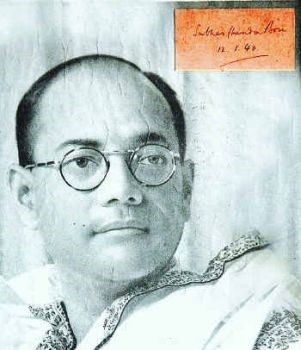

During the outbreak of the 2nd World War, Japan invaded the southern part of Asia and in that situation; the army was built with around 70000 troupes of soldiers. The Singapore force was made up of 45000 soldiers in 1942. The first INA was formed under the guidance of Mohan Singh who was a former officer of The British Indian Army.
The former initiative received considerable support and guidance from the Imperial Japanese Army along with the Ethnic population of India, especially from the south or east region. The army was initially set up during the period of the Malay campaign (Aryal & Bharti, 2021). The main reason for the formation of this army is the imprisonment of the prisoners and their pathetic condition.
The resentment against the officials of the British as well as British Generals guided numerous soldiers to this army. In the formation of this army, there was some negotiation and conflict of opinion between The Imperial Japanese Army and Mohan Singh (Parashar, Singh, & Chitranshi, 2022). This army was primarily formed with the aim of fighting against the army of British and this army was fully made up of the prisoners of the second world war.
The principal combatant of the formation of this army was the axis power of three countries like Germany. Italy as well as Japan. After the second war, the southern along with the eastern part of Asia was fully controlled by the British power. Another nationalist of India, Rash Behari Bose gave all the leadership of this army and the take most responsibility in the operation process as well. The disagreement between INA and the army of Japan led to the operational disbandment of the army in the year 1942.
After the disbandment of the first INA due to the action of Mohan Singh Japanese Army Command again agreed to the formation of the Indian National Army with his collaboration. S.C Bose was suggested by Mohan Singh as a leader of this INA as both countries' people were very much aware of the contribution and devotion of this nationalist.
The activities of S.C Bose in India led to his imprisonment by the police force of Britain in his own house. He somehow managed to escape from India and arrived in berlin in the year 1941. The surge of volunteers of INA searched for another leader for them as S.C Bose was involved in the formation of another army namely Azad Hind Fauj. Axis power was in the hand of the provisional government that declared war against the power of Britain as well as the United States.
For the development of this army, all the trained soldiers along with resources were collected by him. There was a special woman regiment too namely the Rani Jhansi Regiment which was controlled by him. In 1943 the Japanese Army captured the Andaman and Nicobar Islands from the British and handed over the authorship to INA. These two islands were newly named Shahid Dweep as well as Swaraj Dweep.
Two different phases were seen in the formation of INA the first phase was observed after the outbreak of the Quit India Movement and then the army gained a boost. The first division of this army was done in 1942 with more than 16,300 armies. The Japanese wanted to receive only 2000 soldiers while Sir Mohan Singh wished for a larger army. This is the reason he was seized by the Japanese army.
The second phase of this army is the most important and in this phase, the army became stronger with more force and developed leadership. In this phase, the army was led by the joint venture of Rashbehari Bose and Subhas Chandra Bose . In the year, 1942, Rashbehari Bose founded a League in Tokyo when he approached S.C Bose for leading the army.

Subhas Chandra Bose
Unknown authorUnknown author, Public domain, via Wikimedia Commons
INA was one of the most significant armies that boosted the movement of the mainstream nationalist struggle. Besides, it also motivated greatly the efforts of non-violent nationalists in the freedom movement of India. The principal motto of this army is unity, sacrifice as well as faith. It has a great contribution to securing the independence of India from the power of the British.
Another important contribution of INA was providing inspiration to the Naval revolts that occurred in 1946. It organized the provisional government of the independent for mobilizing all types of forces very effectively.
S.C Bose arrived in Singapore and he handed over all the power of INA to him. He was appointed as a Supreme Commander of the army on 25th August of that following year. Subhas Bose then formed a Provisional Government for independent India on 21st October in Singapore. He separated different departments into several personalities like the finance portfolio was handed over to H.C. Chatterjee, M.A. Aiyar looked after the broadcasting operations and the women's department was led by Lakshmi Swaminathan.
Q.1. Who was the actual founder of INA?
Ans. INA was founded by the commander Mohan Singh and in the initial phase, it was called the Indian Independence League. The prisoners along with the captured person by Japan were included in this army.
Q.2. What was the principal motto of INA?
Ans. The principal motto of INA was unity, faith as well as sacrifice. The motto has a great impact on the youngsters of India.
Q.3. Who was the leader of INA?
Ans. The leader of INA was changed several times and at first, it was Mohan Singh. Rashbehari Bose became the leader of INA in the second phase and he handed over the leadership to S. C Bose.